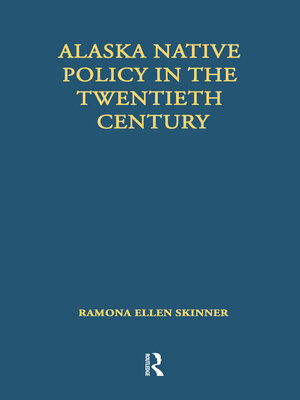Alaska Native Policy in the Twentieth Century
ebook ∣ Native Americans: Interdisciplinary Perspectives
By Ramona Ellen Skinner

Sign up to save your library
With an OverDrive account, you can save your favorite libraries for at-a-glance information about availability. Find out more about OverDrive accounts.
Find this title in Libby, the library reading app by OverDrive.



Search for a digital library with this title
Title found at these libraries:
| Library Name | Distance |
|---|---|
| Loading... |
This book explores the application of federal Indian policy to Alaska Natives in the 20th century, a process driven by the federal government's desire to acquire Indian land. Twentieth century Indian policy, as applied in Alaska, has oscillated between encouraging the privatization of land and assimilation of Native Alaskans into the dominant society, and allowing for Native autonomy and self-government. The Alaska Reorganization Act of 1936, better known as the Alaska Native New Deal, promoted Native self-government through constitutions and native self-sufficiency through corporations within geographic limits of designated reservations. In Alaska, the federal government's termination policy extended state jurisdiction over Native peoples after World War Two. A new policy of self-determination was initiated by the passage of the Alaska Native Claims Settlement Act of 1971. With this act, 40 million acres were conveyed to newly created Native corporations. Alaska Natives would achieve self-determination by participation in corporate decisions. This history of the legislation and implementation of federal Indian policy in Alaska explores the tensions and reversals expressed through successive legislative acts, and focuses upon the implications of this policy for Native Alaskans.







